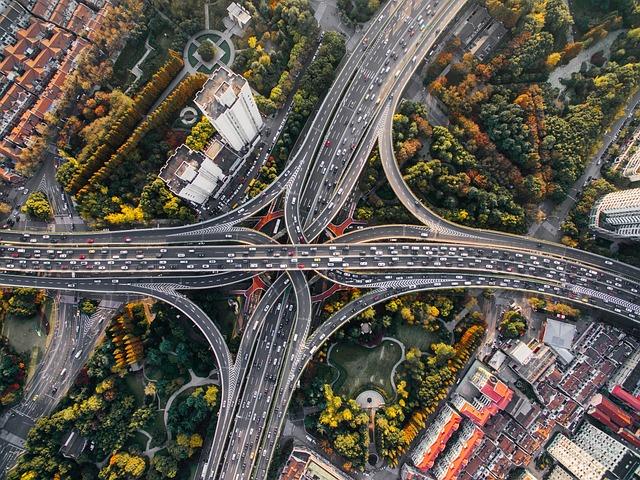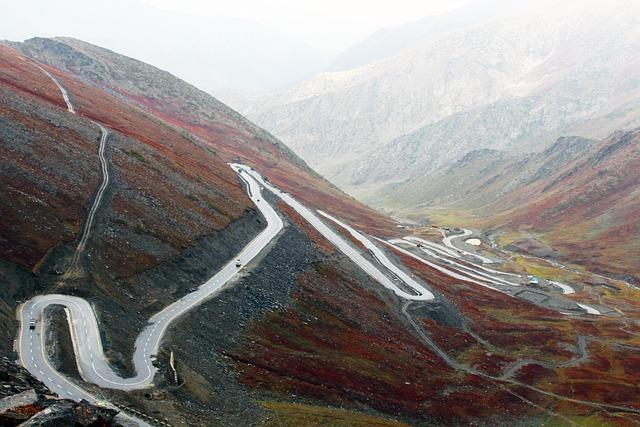In the heart of South Asia, Pakistan stands as a land of contrasts and untapped potential, tethered to rich cultural heritage and a burgeoning economy yearning for growth. As the nation grapples with a myriad of economic challenges, from inflationary pressures to shifting global markets, the significance of trade has never been more pronounced. Like veins coursing through a body, trade connections weave through Pakistan, enriching local industries, fostering international partnerships, and igniting the flames of entrepreneurship. This article embarks on a journey through Pakistan’s economic landscape, delving into the pivotal role that trade plays in shaping the nation’s future. From the bustling ports of Karachi to the entrepreneurial hubs of Lahore, we will explore how trade not only serves as a lifeline for the economy but also as a catalyst for sustainable development and regional integration. Join us as we navigate the complexities of this landscape, uncovering the opportunities and challenges that lie ahead in the pursuit of economic prosperity.
Understanding the Current Economic Climate and Trade Dynamics in Pakistan
The current economic landscape of Pakistan is shaped by a multitude of factors, both internal and external, influencing trade dynamics significantly. As the nation grapples with challenges such as inflation, fluctuating currency values, and supply chain disruptions, the importance of a robust trading framework becomes increasingly evident. Key elements affecting trade include:
- Exchange Rate Variability: The fluctuation of the Pakistani Rupee against major currencies impacts import and export pricing.
- Inflationary Pressures: Rising prices affect consumer spending and purchasing power, reshaping demand for imported goods.
- Regulatory Environment: Changes in trade policies and tariffs can either foster or hinder international trade relationships.
In response to these challenges, Pakistan has sought to diversify its trading partners and bolster local industries to enhance export potential. The government is actively promoting initiatives aimed at boosting trade, including improving infrastructure, streamlining customs processes, and encouraging investment in key sectors. To illuminate the trade dynamics, consider the following table showcasing the top export commodities:
| Commodity | Export Value (USD Billion) | Key Markets |
|---|---|---|
| Cotton & Textiles | 4.5 | USA, EU |
| Rice | 2.2 | Middle East, Africa |
| Leather Goods | 1.0 | Germany, Italy |
| Sports Goods | 0.8 | USA, UK |

Exploring Key Sectors for Export Growth and Diversification Opportunities
As Pakistan seeks to strengthen its economic fabric through trade, certain sectors present promising avenues for export growth and diversification. Textiles remain a cornerstone, supported by the country’s rich history in craftsmanship and abundant cotton production. However, it’s essential to expand beyond traditional garments into value-added products such as home textiles and technical textiles. Alongside, emerging sectors such as information technology and software development are witnessing a boom, fueled by a youthful workforce and increasing global digital demands. This sector not only holds potential for service exports but can also attract foreign investments through tech hubs.
Another significant area for diversification is agriculture, where opportunities exist in exporting processed foods, fruits, and vegetables. With sustainable practices and innovative farming techniques, Pakistan can position itself as a reliable supplier in global markets. The pharmaceuticals sector, too, is ripe for exploration, as it continues to expand with the rising demand for generic medications. To further streamline this growth, fostering trade agreements and enhancing logistical frameworks will be crucial in connecting these sectors to international avenues. Below is a brief comparison of promising sectors and their export potentials:
| Sector | Growth Potential | Key Products |
|---|---|---|
| Textiles | High | Home textiles, Technical textiles |
| Information Technology | Medium-High | Software services, IT solutions |
| Agriculture | Medium | Processed foods, Fresh produce |
| Pharmaceuticals | Medium | Generic drugs, Biologics |

Strategies for Strengthening Trade Relationships and Global Partnerships
To enhance trade relationships and cultivate global partnerships, it is imperative for Pakistan to adopt innovative approaches that foster collaboration and mutual growth. Participating in trade fairs and expos provides a platform for local businesses to showcase their products and connect with international buyers. Additionally, engaging in bilateral trade agreements can open new markets and reduce barriers, ensuring smoother transactions. One effective strategy is to establish trade missions, where delegates can meet potential partners, share insights, and discuss market opportunities that benefit all parties involved.
Another crucial aspect of strengthening these ties is the investment in technology and infrastructure to facilitate trade. By modernizing ports and logistics networks, Pakistan can improve its export capabilities and reduce costs. Furthermore, training programs for local businesses on international trade regulations and compliance can empower them to navigate foreign markets more effectively. Creating an online platform that connects exporters and importers can streamline communication and foster long-lasting relationships, which are essential for thriving in the competitive global trade environment.

Policy Recommendations for Enhancing Trade Infrastructure and Competitiveness
To enhance Pakistan’s trade infrastructure and improve competitiveness on a global scale, a multi-faceted approach is essential. First and foremost, investment in transportation networks—including roads, railways, and maritime facilities—should be prioritized. Upgrading existing infrastructure will not only reduce transit times but also lower logistics costs, beneficially impacting trade margins. Additionally, establishing logistics hubs at strategic locations can facilitate smoother operations and offer commercial incentives for both local and foreign businesses.
Furthermore, fostering public-private partnerships (PPPs) in trade-related sectors can drive innovation and efficiency. Encouraging the private sector to invest in technology and operational enhancements can lead to greater productivity. Other key recommendations include simplifying customs procedures to minimize delays and enhancing digital trade platforms to streamline transactions. By implementing these strategies, the government can create a more inviting environment for foreign direct investment and position Pakistan as a competitive player in regional trade.
Concluding Remarks
In the intricate tapestry of Pakistan’s economy, trade emerges as a pivotal thread, weaving connections both locally and globally. As we navigate the complexities of this landscape, it becomes evident that the country’s trade dynamics are not merely transactions; they are the lifeblood that fuels growth, innovation, and resilience. Engaging with diverse markets and fostering sustainable partnerships will be crucial for Pakistan to harness its potential and address the challenges that lie ahead.
The path forward requires a collective commitment to overcoming obstacles, embracing opportunities, and reimagining the future of trade. As stakeholders from all sectors—government, business, and civil society—join forces, they can cultivate an environment that nurtures economic stability and prosperity. In the years to come, actively engaging with the global marketplace and prioritizing trade will not only elevate Pakistan’s standing in the world but will also contribute decisively to the well-being of its citizens.
As we conclude our exploration of this vital subject, let us remember that the journey through Pakistan’s economic landscape is ongoing. The choices made today will shape the trade narratives of tomorrow, bridging gaps and forging new paths towards a vibrant and sustainable economic future. In this ever-evolving story, each step we take holds the promise of progress—a promise that resonates with the hopes and aspirations of a nation poised for transformation.



